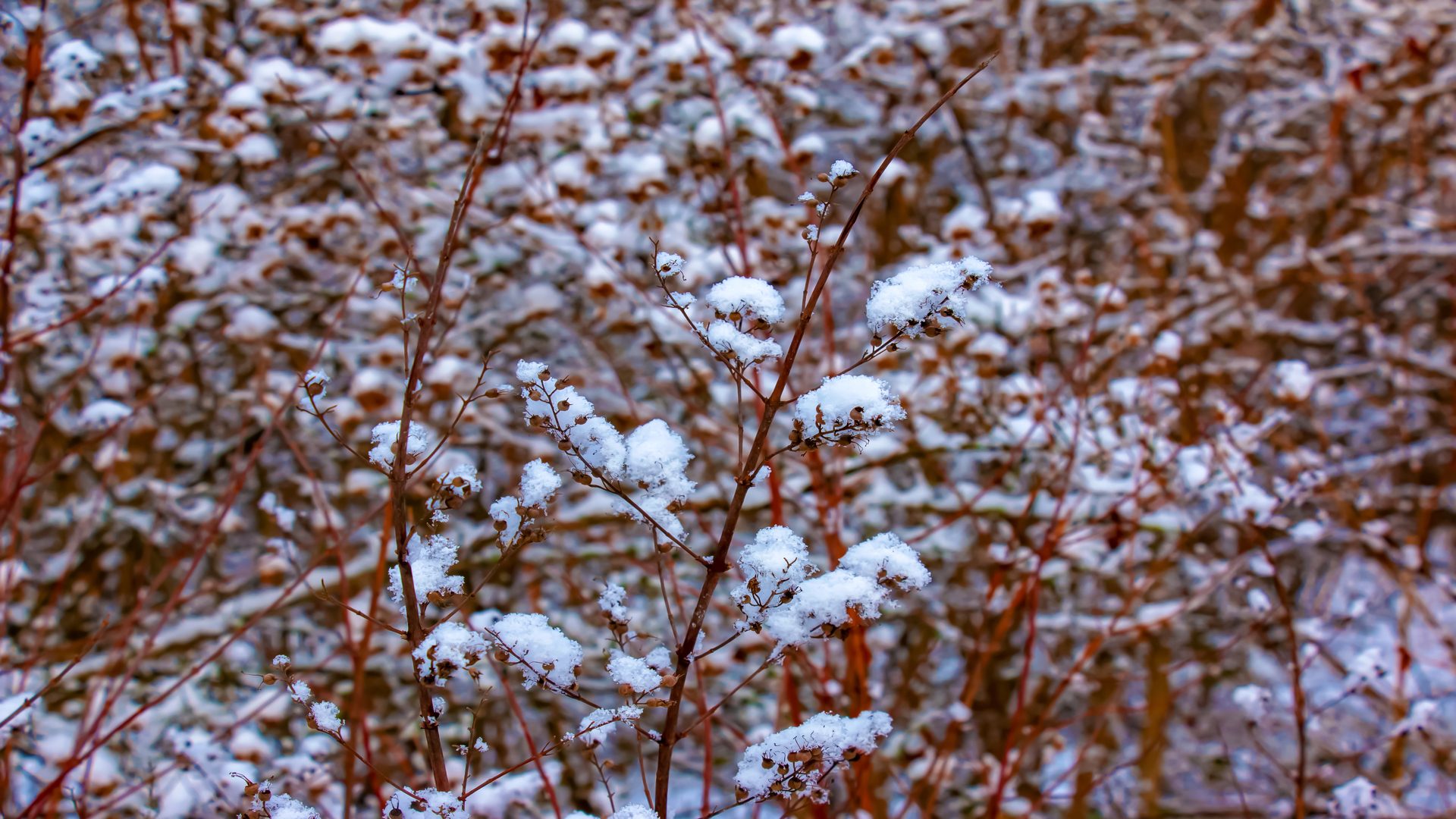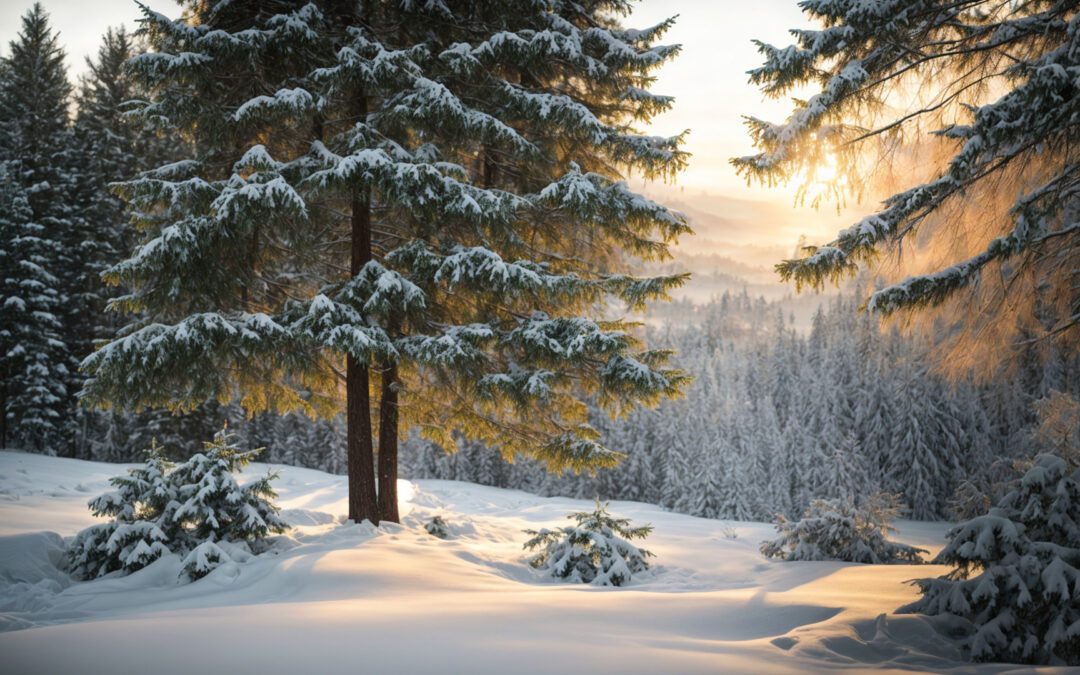Winter may seem like an unusual time to plant trees and shrubs, but in Colorado Springs, it can be one of the best seasons to get a head start on your landscaping goals. Late winter planting allows trees, shrubs, and perennials to establish strong root systems before the active growing season begins in spring. With careful planning and proper techniques, your plants will be well-positioned to thrive once the warmer months arrive.
In this guide, we’ll explore the benefits of winter planting, the best species for cold-weather installation, and essential tips to ensure successful tree and shrub establishment in your garden.
Why Plant in Winter?
Many homeowners assume that spring is the best time for new plant installations, but late winter can actually offer several advantages:
- Stronger Root Development: Since trees and shrubs are dormant during the winter, they focus on root growth rather than foliage. This gives them a head start before spring arrives.
- Less Transplant Shock: Cooler temperatures reduce the risk of water loss and stress on newly planted specimens.
- Moisture Retention: Winter soil tends to hold more moisture than summer soil, reducing the need for frequent watering.
- Availability of Dormant Stock: Many nurseries offer bare-root trees and shrubs in winter, which are often more affordable and adapt quickly to their new environment.
While winter planting offers many advantages, it’s important to follow best practices to ensure success.

Choosing the Right Trees and Shrubs for Winter Planting
Not all trees and shrubs are suited for late winter installation. To ensure your plants can withstand the cold and thrive in Colorado Springs’ high-altitude climate, choose species that are hardy, drought-tolerant, and adapted to local conditions.
Recommended Trees for Winter Planting:
- Evergreens: Ponderosa Pine, Douglas Fir, Blue Spruce
- Deciduous Trees: Bur Oak, Honeylocust, Kentucky Coffeetree, Serviceberry
- Fruit Trees: Apple, Pear, Cherry (ensure they are hardy varieties)
Recommended Shrubs for Winter Planting:
- Evergreen Shrubs: Boxwood, Juniper, Mugo Pine
- Flowering Shrubs: Lilac, Forsythia, Viburnum, Potentilla
- Drought-Tolerant Shrubs: Rabbitbrush, Sumac, Ninebark
Native and adaptive plants are always a smart choice since they require less maintenance and can better withstand local weather fluctuations.
Essential Winter Planting Tips
Planting during the winter months requires some extra preparation to ensure that your trees and shrubs are established successfully. Follow these key steps for a healthy start:
1. Choose the Right Time for Planting
- The best time for winter planting is late winter to early spring when the ground is not frozen solid but temperatures remain cool.
- Avoid planting during deep freezes or heavy snow periods. Ideally, the soil should be workable and free of frost.
2. Prepare the Planting Site
- Test the soil to ensure proper drainage. Poor drainage can lead to root rot.
- Dig a hole twice as wide as the root ball but no deeper than the root system itself. This helps the roots spread out more easily.
- If the soil is dry, water it lightly before planting. However, avoid overwatering, as excessive moisture can lead to root suffocation.
3. Handle Roots with Care
- For Container-Grown Trees & Shrubs: Gently loosen the roots before planting to encourage outward growth.
- For Bare-Root Trees & Shrubs: Soak the roots in water for a few hours before planting to rehydrate them. Spread roots evenly in the hole to prevent circling.
4. Backfill and Mulch Properly
- Refill the hole with native soil, gently pressing it down to remove air pockets. Avoid packing it too tightly, as this can hinder root expansion.
- Apply a 2-3 inch layer of mulch around the base, but keep it a few inches away from the trunk to prevent rot and pests. Mulch helps insulate roots and retain moisture.
5. Water Wisely
- Even in winter, newly planted trees and shrubs need moisture. Water deeply after planting to settle the soil and encourage root establishment.
- Check moisture levels every couple of weeks, especially during dry winter spells. If the ground is dry and temperatures are above freezing, provide supplemental water.
6. Protect Young Plants from Harsh Conditions
- Use Tree Wraps: Wrap young trees with burlap or tree guards to prevent sunscald, which occurs when daytime sun warms the bark, followed by nighttime freezing.
- Shield from Wind: Harsh winter winds can dry out young trees and shrubs. Plant windbreaks or use burlap barriers to protect delicate species.
- Guard Against Wildlife: Rabbits, deer, and rodents may nibble on young bark in winter. Use protective tree guards or fencing to keep them at bay.
Monitoring and Spring Transition
Once your trees and shrubs are in the ground, the work isn’t over. Regular monitoring will ensure they are prepared for a strong start in spring.
- Continue checking soil moisture throughout late winter.
- Remove protective wraps in early spring to prevent fungal growth and allow proper air circulation.
- Apply a balanced, slow-release fertilizer in early spring to support growth.
- Inspect plants for signs of winter damage, such as frost cracks or desiccation, and prune any dead or broken branches.
Common Mistakes to Avoid
Even with the right approach, mistakes can happen. Here are some common errors to steer clear of when planting in winter:
- Planting Too Deeply: Trees and shrubs should be planted at the same depth as they were in the nursery. Planting too deep can suffocate roots.
- Skipping Mulch: Without mulch, soil can dry out too quickly, leading to stress and poor establishment.
- Overwatering or Underwatering: Finding the right balance is crucial. Water only when needed, ensuring soil stays moist but not soggy.
- Ignoring Sun Exposure Needs: Ensure that trees and shrubs are placed in locations that match their sunlight requirements.
Final Thoughts
Late winter is a prime time to plant trees and shrubs in Colorado Springs. By choosing the right species, preparing the site properly, and providing ongoing care, you can set your landscape up for a successful growing season. A well-planted tree or shrub in winter will have the advantage of early root development, allowing it to flourish when spring arrives.
By following these winter planting tips, you can ensure your trees and shrubs establish strong roots and flourish in the coming spring. If you need assistance with selecting the right species or proper planting techniques, the team at Affordable Services Colorado Springs is here to help. Contact us today to ensure your landscape thrives year-round.






